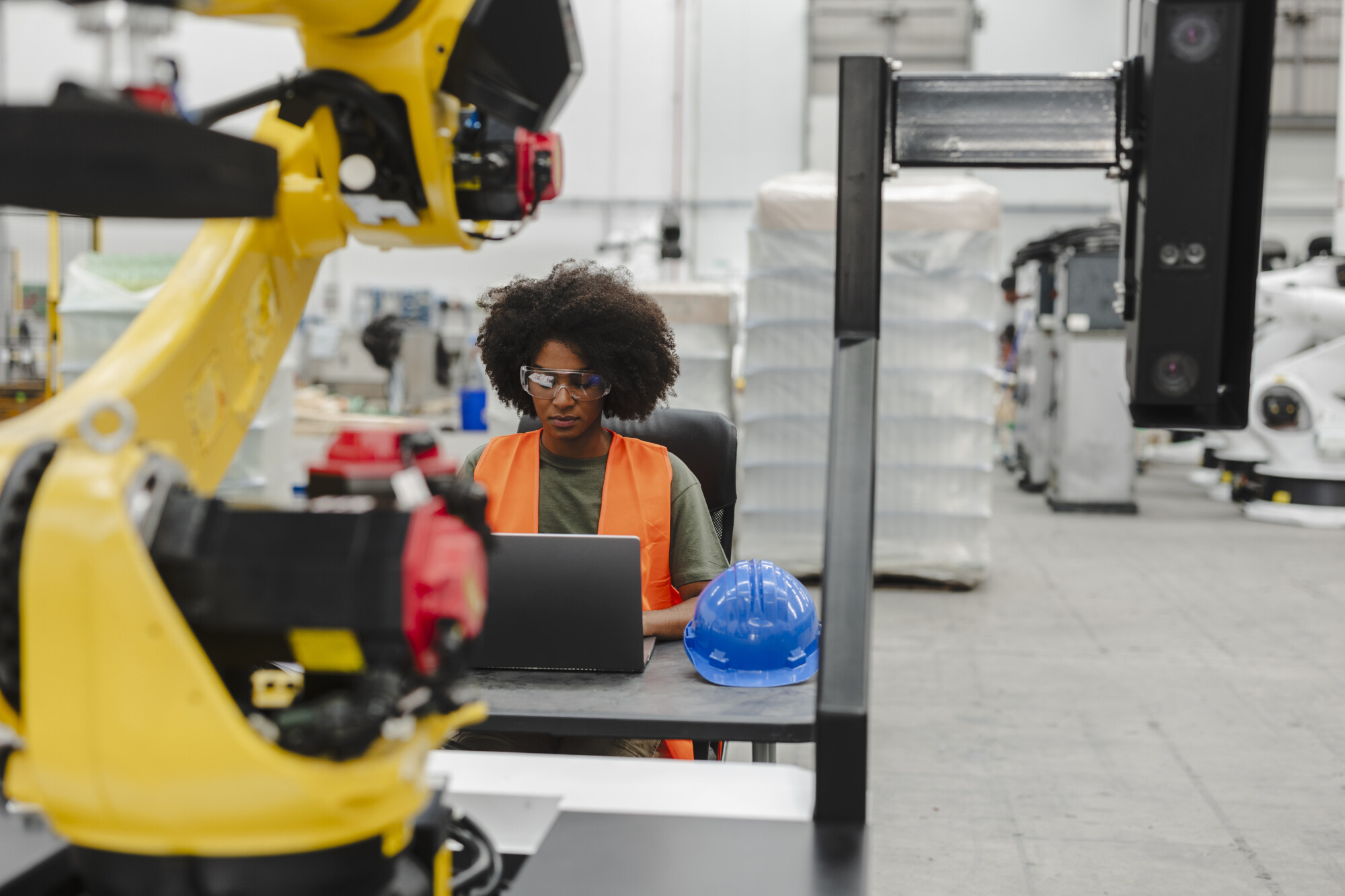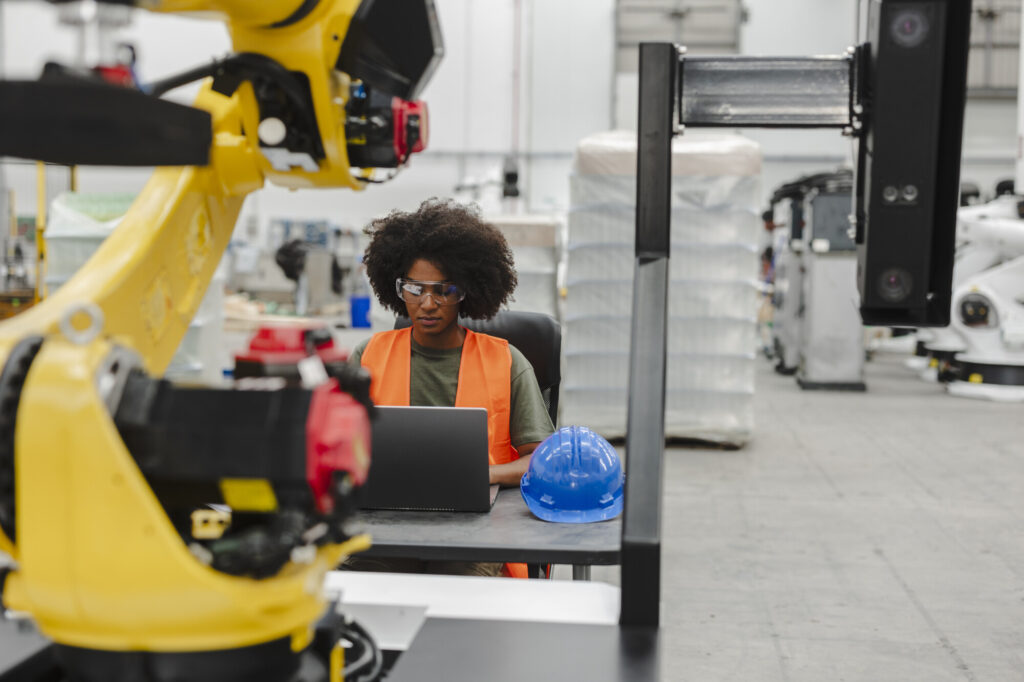
Manufacturing in the AI revolution: 5 trends that actually matter
What small and medium-sized manufacturers need to know about AI trends in manufacturing right now

The headlines are loud: AI will replace your workers (that’s not the entire truth), every plant will be fully autonomous, and carbon neutrality is non-negotiable by next quarter.
Manufacturing leaders must cut through the noise quickly to understand the real AI trends impacting manufacturing in 2025 and beyond.
Most of what’s being sold as “the future of manufacturing” is out of reach (or irrelevant) for small and medium-sized enterprises (SMEs). This is especially true for family-run, legacy businesses where capital is tight and decisions are generational, not quarter-to-quarter.
But change is happening. And some of it can’t wait.
The numbers don’t lie
In fact, a recent Verizon survey found a significant increase in AI adoption for small business owners. AI use among small and mid-sized businesses has surged since 2023, with nearly 40% incorporating it into their operations.
Here are the five trends we believe matter most heading into the year’s second half and into 2026. Not just because they’re real, but because they’re actionable right now.
Manufacturing trend: Workforce strategy is replacing workforce panic
The skilled labor shortage isn’t going away, but panic isn’t a plan.
Manufacturers who are making progress aren’t waiting for the perfect hire. They’re redesigning jobs to be more trainable, investing in frontline leadership, and finally aligning HR with operations.
What to do now:
- Audit your job roles. Where can you simplify without compromising quality?
- Shift from “experience required” to “trainability required.”
- Build internal pathways for growth. Retention beats constant recruitment.
Manufacturing trend: AI matters, but not the kind on stage at trade shows
Ignore the AI sizzle reels and vendor demos promising “lights-out factories.”
The AI that’s making a real impact in SME manufacturing is boring but powerful: demand forecasting, maintenance prediction, and workflow optimization.
What to do now:
- Identify one process where you’re drowning in spreadsheets or tribal knowledge.
- Look for affordable AI-driven tools that integrate with what you already use (Quality, MES, CRM).
- Focus on decision support, not decision replacement.
Manufacturing trend: Supply chains are getting leaner, not longer
After years of disruption, manufacturers have learned the hard way: redundancy beats just-in-time, and agility beats lowest-cost sourcing.
Many SMEs are quietly reshoring key inputs, dual-sourcing, or building regional partnerships — not because it’s trendy, but because the alternative is too risky.
What to do now:
- Map your critical suppliers. Do you have visibility past Tier 1?
- Stress-test your sourcing: how many days until you’d feel a disruption?
- Invest in relationships, not just contracts. Local partners often bring speed, not just proximity.
Manufacturing trend: Sustainability is shifting from compliance to competitiveness
Large buyers are increasingly passing their ESG requirements down to suppliers.
That means SMEs can’t treat sustainability as an optional CSR initiative; it’s a revenue enabler. Whether it’s emissions data, waste tracking, or energy efficiency, expect more leads to ask for it and more customers to choose based on it.
What to do now:
- Start tracking your baseline energy use and material waste.
- Don’t chase perfection, document progress.
- Tie sustainability metrics to cost savings and operational efficiency, not just optics.
Manufacturing trend: Culture is a differentiator, not just a retention tactic
In a tight labor market and a high-turnover world, culture isn’t fluff; it’s infrastructure.
The most resilient manufacturing firms are the ones with clear values, strong communication, and leadership that shows up. Family businesses often have a head start here. Now’s the time to double down on it.
What to do now:
- Create clarity: how decisions get made, how performance is measured, how people grow.
- Train frontline leaders, not just managers, to carry culture.
- Institutionalize what makes your company unique before scale dilutes it.
What to ignore:
- The metaverse: it’s not coming to your shop floor any time soon.
- Quantum computing: not until your machines are running at capacity.
- Endless pilot programs: you don’t need to test everything. You need to commit to the 20% that works.
Your next move
If you’re a small or medium-sized manufacturer looking ahead and into 2026, focus on trends that make you more resilient, not just more futuristic.
Ask yourself and your team important questions like:
- Where is complexity killing our efficiency?
- Which customers (or suppliers) are creating risk we’re not prepared for?
- What kind of company do we need to be 12 months from now to keep winning?
AI may grab headlines, but leadership turns strategy into results. That’s where the real transformation happens.
Feeling overwhelmed by AI overload? Want to learn how Ascension Group can help you? Click the link below to learn more.

